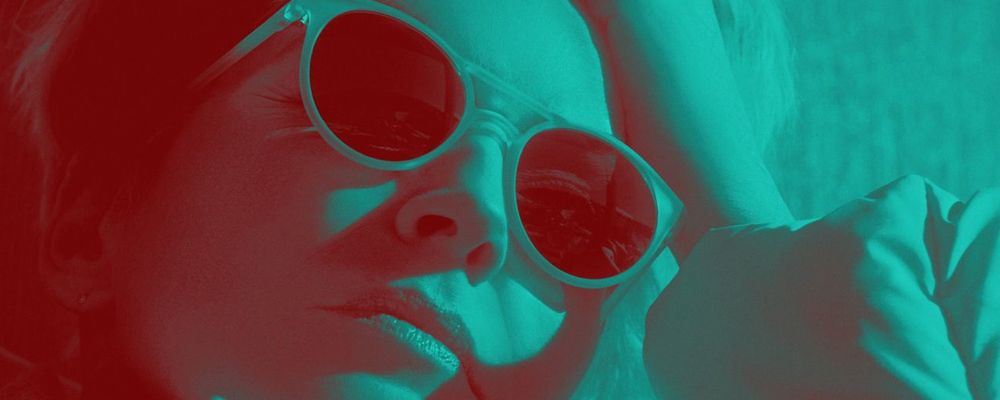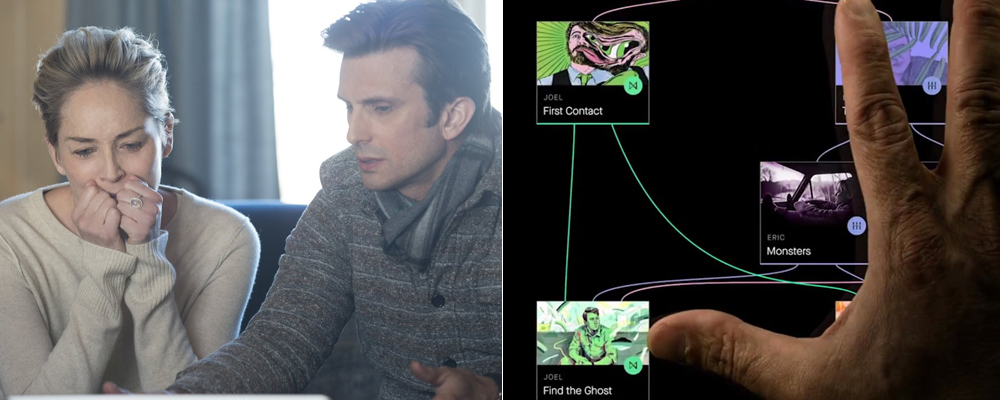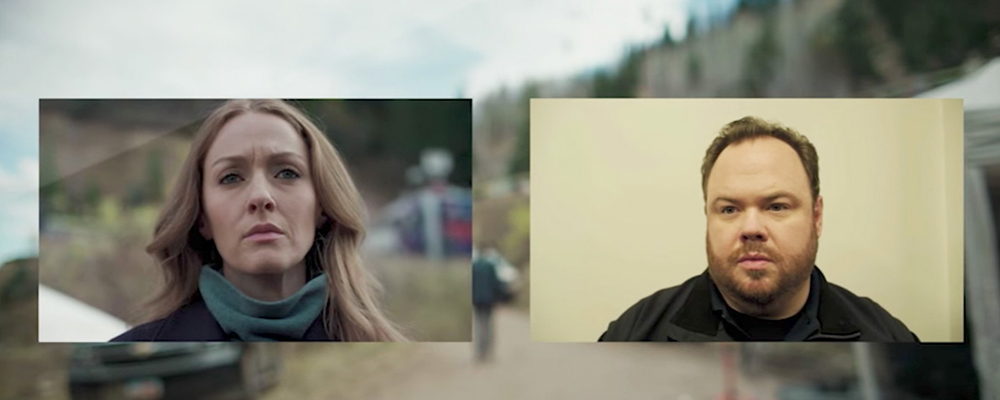Steven Soderbergh Delivers Ground-Breaking Television With Interactive Mini-Series ‘Mosaic’
Aaron Berke
A mosaic is made up of many fragments. Assembled together, the pieces take on form. That form is malleable, changing based on the way you view it. Once you’ve looked at the mosaic for long enough, you’ll begin to see it as a whole. That is the concept behind Steven Soderbergh’s game-changing new television series, very literally named “Mosaic.” The show exists as both a 6-part HBO series consisting of 50 minute episodes, and a mobile app, which allows the viewer to watch from the perspective of each character’s individual story, broken down into choose-your-own-adventure style interactive arcs. Either form affords the viewer a unique viewing experience, and both are needed to answer every question behind the series’ central mystery. Luckily, even without the app, the television series stands on its own as a highly original and ingeniously crafted whodunnit.
Filmed entirely on an iPhone, the 6-episode “Mosaic” revolves around the mysterious murder of children’s author Olivia Lake (Sharon Stone) at a New Year’s Eve party at her Summit, Utah estate. The suspects include her fiancé, Eric Neil (Frederick Weller), who began their relationship as a con artist hired to convince Olivia to sell her property; Joel Hurley (Garrett Hedlund), a wanna-be comic book artist who moves into Olivia’s house after she claims she’ll be able to help his career; and Alan Pape (Beau Bridges) a jealous private security worker who dated Olivia years ago and never got over it. The story takes place in two time periods: 2011, when the murder occurs, and 4 years later, in 2015, when the investigation is re-opened following the discovery of Olivia’s severed hand near her estate. Through the use of carefully-constructed parallel narratives, and some well-timed flash forwards and flashbacks, the mystery of “Mosaic” slowly unravels.
The strength of “Mosaic’s” narrative is its ability to constantly switch between character perspectives while maintaining a consistent level of suspense. Given that the series was deliberately designed to allow each individual character’s story to stand independently, there was always going to be a certain element of jarring displacement whenever the television version switches perspective. But the puzzle-solving nature of the narrative makes those jarring transitions welcome. Rather than throwing the viewer out of the story, the sudden changes force us to re-focus our attention harder, as we scrutinize the narrative and attempt to figure out where each character is headed.
Soderbergh’s ingenious decision to film all of “Mosaic” on an iPhone assists in maintaining a sense of constancy within each character’s segment. The iPhone’s rudimentary depth and focus features keeps every shot on an even playing field. As viewers, we’re all used to the kinds of movie murder mysteries where the directors employ elaborate camerawork to guide the viewer’s attention toward particular suspects. But Soderbergh’s iPhone refuses to do any of the work for us. It allows us to view Olivia, Eric, Joel, Alan, and all other characters as equal participants. As we maddeningly search the camera for any subtle hint of guilt, Soderbergh toys with us by treating us to a tantalizingly long close-up of Joel, right before yanking the camera away and showing us an equally grim close-up of Eric. Without the usual camera tricks, we are forced to pay attention solely to human behavior to try and figure out the culprit. Given how adept some people are at lying, we have our work cut out for us.
Employing a talented set of actors to portray the usual suspects helps. Sharon Stone is perfectly cast as Olivia Lake. She gets to chew the scenery as a big personality with a tortured soul, playing equal parts eccentric man-eater and vulnerable, lonely recluse. Stone manages to find that authentic human space right in the middle, and it results in her best performance in years. Weller plays the con artist so well that when his character, Eric, genuinely falls for Olivia, it takes the audience much longer to catch up to his change of heart. Jennifer Ferrin takes a calculating turn as Petra Neil, Eric’s sister who appears hell bent on proving her brother’s innocence. Ferrin keeps her cards close to her chest, and she’s downright impossible to read. But the stand-out amongst the players is Hedlund’s Joel Hurley. His innocence is cast in doubt from the beginning, but as the chief victim of Olivia’s man-eating tendencies, Joel manages to earn our sympathy throughout. Soderbergh’s iPhone gets closer to Joel than any other character, and we dive uncomfortably deep into his mind as he begins to display signs of possible paranoid schizophrenia. As Joel wrestles with his own morality, Hedlund powerfully portrays the character’s inner torment, and makes us consistently root for him against all odds.
Make no mistake, in order to get the complete “Mosaic” experience, downloading the app and playing through it is essential. While the television series mostly plays in chronological order, the app is arranged to allow you to view each character’s complete story individually, in branching segments. Many segments also feature scenes not shown in the TV version, which offer extra background and context for the characters’ actions. The app also features hidden pop-ups within the video segments labeled “discoveries.” These pop-ups feature additional scenes, fictional newspaper clippings, artwork samples, and even a lengthy PDF about the Cult of Eventualism. Without spoiling it, let’s just say that this little gem contains intriguing information about the series’ events. Read it, and you’ll suddenly see the entirety of “Mosaic” from a brand-new light.
There’s a unique thrill in watching “Mosaic’s” narrative play out differently every time you watch it. The side-by-side presentation of the app and the TV series makes for a fascinating study in editorial choices, and how the differences a director makes in editing can fundamentally alter a viewing experience. For example, the TV series begins with a scene set in 2015, in which Joel is being confronted by police officer Nate Henry with a mounting pile of evidence that he was Olivia’s real murderer. We then spend the rest of the pilot episode in 2011. But Joel’s role in the opening has a major impact on the way we observe him throughout much of the pilot, and indeed, the series.
That first scene ingrains the viewer with an underlying assumption that Joel is the guilty party, and it colors our perception of him even when later segments reveal information that directly flies in the face of Joel’s suspected guilt. Again, Joel is a very likable character, so that helps us continue to root for him, but it also makes us nervous about his fate. Soderbergh cleverly tilts us toward focusing our energy on Joel and letting other potential suspects slip by our notice.
On the other hand, the “Mosaic” app’s first branching segment begins with Olivia and Eric’s meeting, which narratively takes place after her first encounter with Joel. In the app’s narrative, Joel is seen for the first time as a simple handyman on Olivia’s property, so we have no reason to suspect him of anything. When the app later presents us with the choice to view Joel’s narrative, we see things play out from his perspective, and we have even less reason to suspect him.
Placing Joel as the most likely suspect in the TV version is necessary for building narrative tension, but it does take away some of the thrilling mystery that the “Mosaic” app offers in introducing each character as a blank slate. This is one area where the app’s presentation is superior, offering a totally unbiased perspective. But the TV series makes up for it by building truly great momentum around Joel’s narrative, momentum that the app’s disconnected branches never allow. “Mosaic” thus becomes a fascinating study of form and content, presenting two unique but equally valid viewing experiences, each one with its own set of benefits and pitfalls.
“Mosaic” reminds us that television has certain rules it needs to follow in order to maintain its audience. IPhone apps don’t need to follow those rules, and that, I think, is what drew Soderbergh to explore the medium. Some might consider it a weakness that “Mosaic” places so much importance on the app as a complimentary experience. But think of it more like the bonus features section on a Blu-Ray. You can absolutely view “Mosaic” as a standalone TV series without missing anything. But if you view the app, you’ll get the complete experience from start to finish. “Mosaic” is already innovative TV. The inclusion of the app makes it groundbreaking.
“Mosaic” takes a choose-your-own adventure concept found in children’s books and role-playing games, and brings it into the world of television entertainment. The result is a fascinating tapestry of multiple narratives, where every player is important, and nothing is as it seems. Soderbergh has crafted a genuine mosaic. By the time you reach the end of the story, you’ll realize that it’s not about the conclusion. It’s about how the individual pieces fit together.
“Mosaic” premieres Jan. 22 at 8 p.m. ET and airs Mondays on HBO. You can download the “Mosaic” app on all Android and iOS phones. “Mosaic” can be experiencced on multiple platforms. Find out more here.




